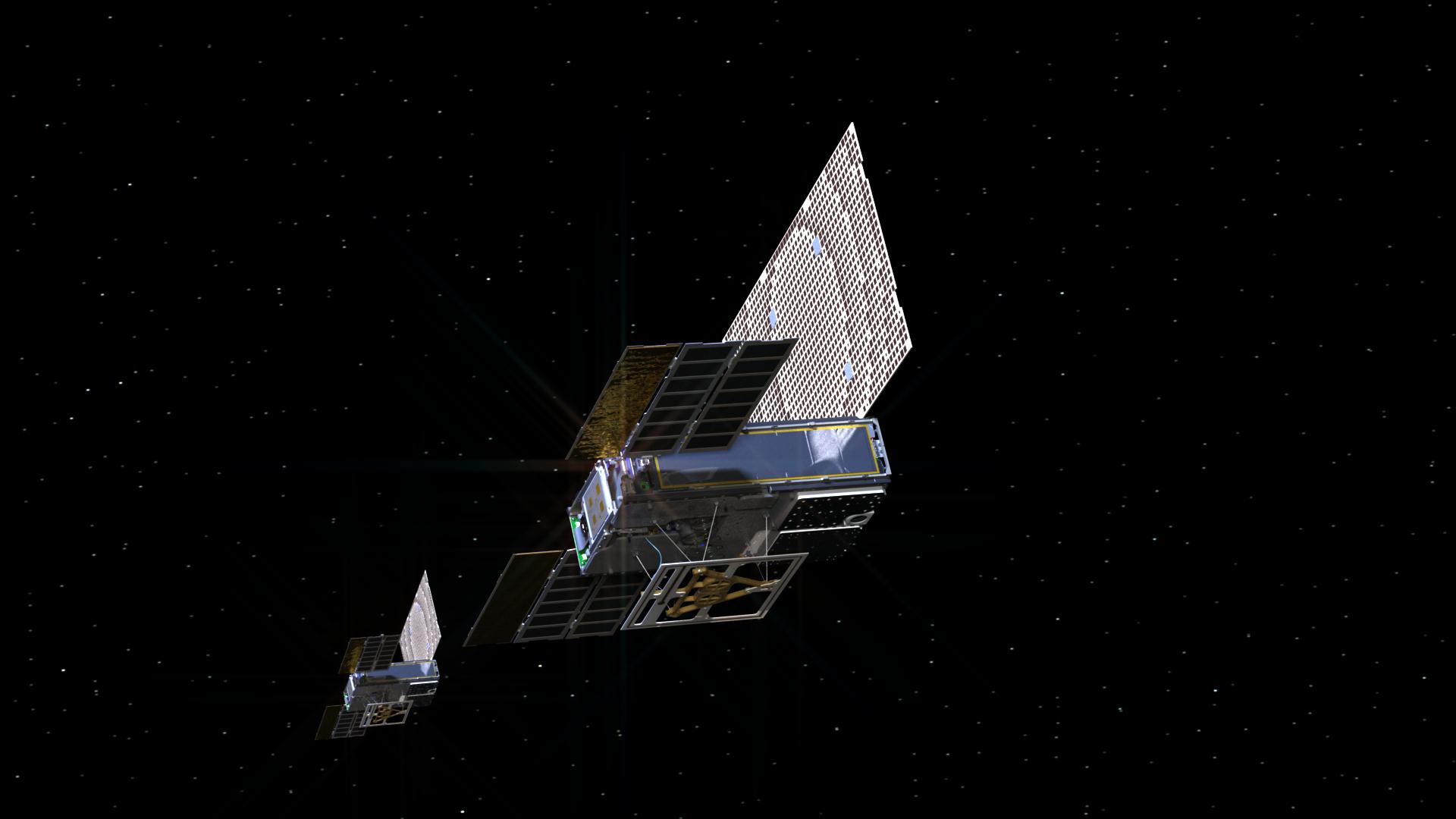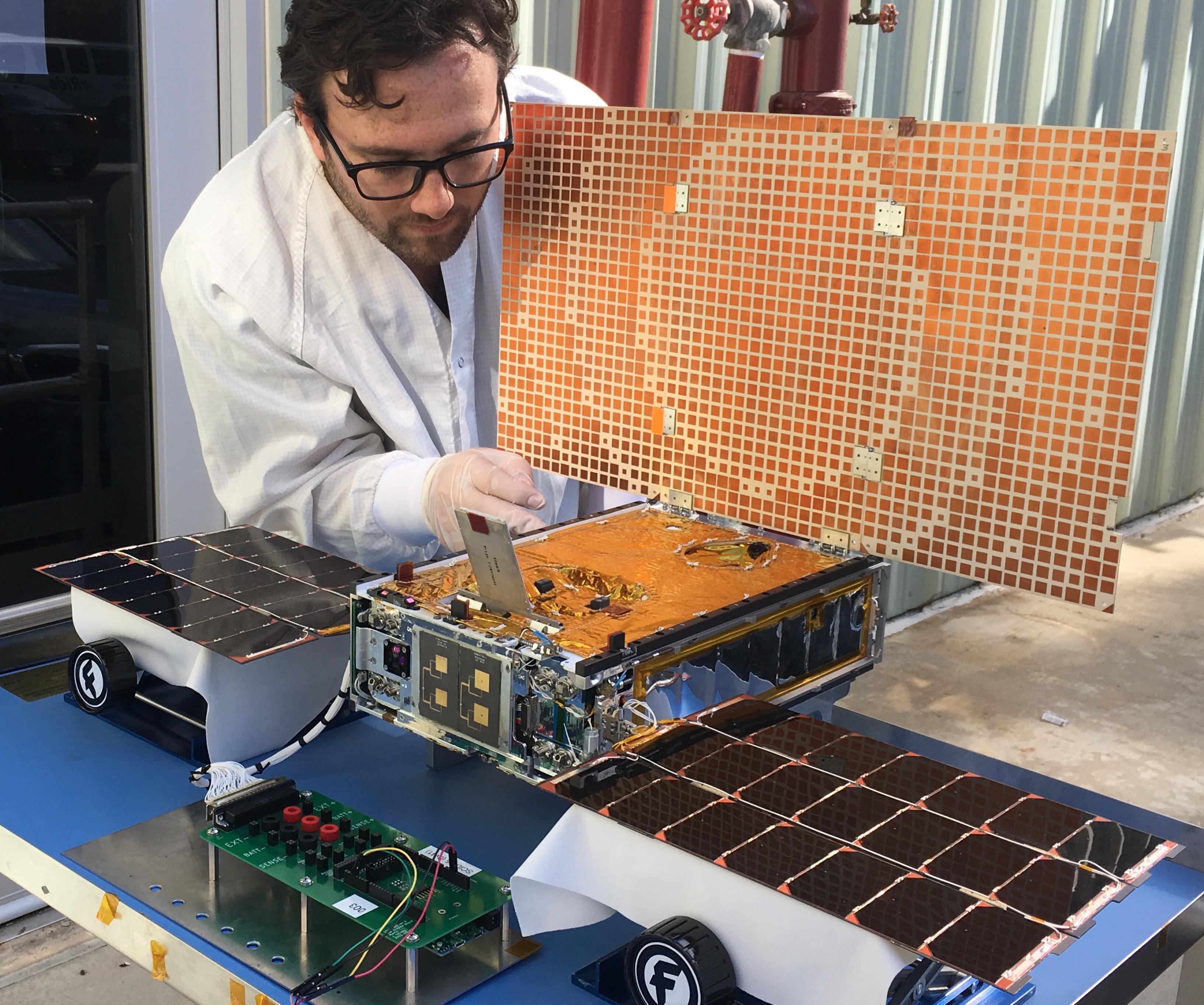NASA's Mars Cubesats 'Wall-E' and 'Eva' Will Be First at Another Planet
When NASA's InSight Mars lander launches for the Red Planet on Saturday (May 5), it won't be traveling alone. Two small spacecraft, nicknamed "Wall-E" and "Eva," are hitching a ride as the first cubesats to visit another planet.
The twin cubesats are tiny spacecraft of a type whose design became popular in the 2000s as miniaturized computers increased the craft's capabilities. While they don't have all the backup systems and capabilities of bigger spacecraft, cubesats are useful for applications such as communications, tracking shipping or performing Earth observation. Until now, all of them stayed close to our home planet.
So, Mars InSight's twin cubesats, officially called Mars Cube One (MarCO), will be pioneering Red Planet spacecraft. They will fly on the same Atlas V rocket that will heft InSight into space from Vandenberg Air Force Base in California during the first interplanetary launch from the West Coast. [Where to Watch InSight's Mars Launch from the California's Coast]
"These are our scouts," said Andy Klesh of NASA's Jet Propulsion Laboratory (JPL), who is also MarCO's chief engineer, in a NASA statement. "Cubesats haven't had to survive the intense radiation of a trip to deep space before or use propulsion to point their way towards Mars. We hope to blaze that trail."

The MarCOs will follow InSight all the way to Mars, then (as long as the craft make it safely) the cubesats will send data about InSight back to Earth as the spacecraft lands. Their fanciful "Wall-E" and "Eva" names come from the main characters in a 2008 Pixar film about space robots, called "Wall-E."
"Both MarCOs use a compressed gas commonly found in fire extinguishers to push themselves through space, the same way Wall-E did," JPL said.
"The MarCOs won't produce any science of their own and aren't required for InSight to send its data back home. The lander will rely on NASA's Mars orbiters for that, in addition to communicating directly with antennas on Earth," JPL added. "But the twins will be a crucial first test of cubesat technology beyond Earth orbit, demonstrating how they could be used to further explore the solar system."
Breaking space news, the latest updates on rocket launches, skywatching events and more!

Of course, there's no guarantee the MarCOs will get there. First, there needs to be enough battery power available to not only unfurl their solar arrays, but also to communicate with Earth. (If NASA initially hears silence, it will assume that the spacecraft are just charging up a little before sending communications.) The cubesats' delicate electronics also need to withstand bursts of radiation on their way to Mars, just like the humans eventually voyaging there will have to do.
But if the cubesats do make it, they will provide a welcome set of extra eyes as InSight tries to stick its landing. Mars is a difficult planet for spacecraft, and so many machines never touch down safely on the surface and call back home. For future Mars missions, cubesats could provide another means of examining the surface if a spacecraft falls silent during landing.
Follow us @Spacedotcom, Facebook and Google+. Original article on Space.com.
Join our Space Forums to keep talking space on the latest missions, night sky and more! And if you have a news tip, correction or comment, let us know at: community@space.com.

Elizabeth Howell (she/her), Ph.D., was a staff writer in the spaceflight channel between 2022 and 2024 specializing in Canadian space news. She was contributing writer for Space.com for 10 years from 2012 to 2024. Elizabeth's reporting includes multiple exclusives with the White House, leading world coverage about a lost-and-found space tomato on the International Space Station, witnessing five human spaceflight launches on two continents, flying parabolic, working inside a spacesuit, and participating in a simulated Mars mission. Her latest book, "Why Am I Taller?" (ECW Press, 2022) is co-written with astronaut Dave Williams.
